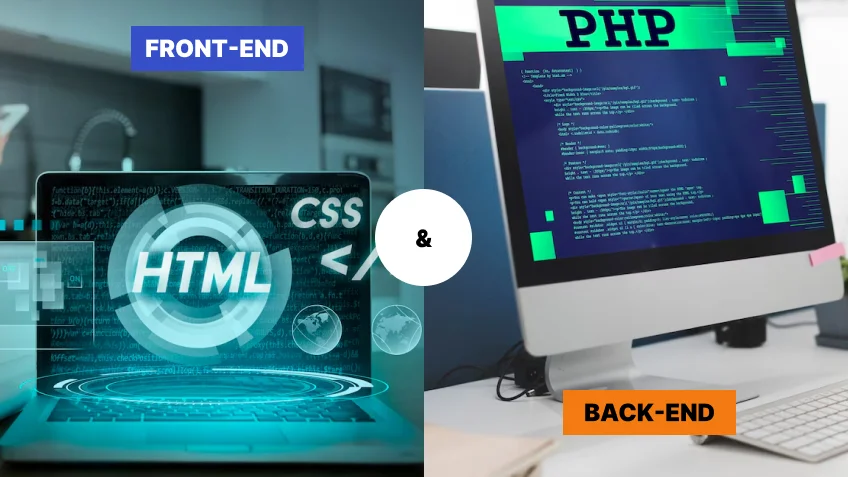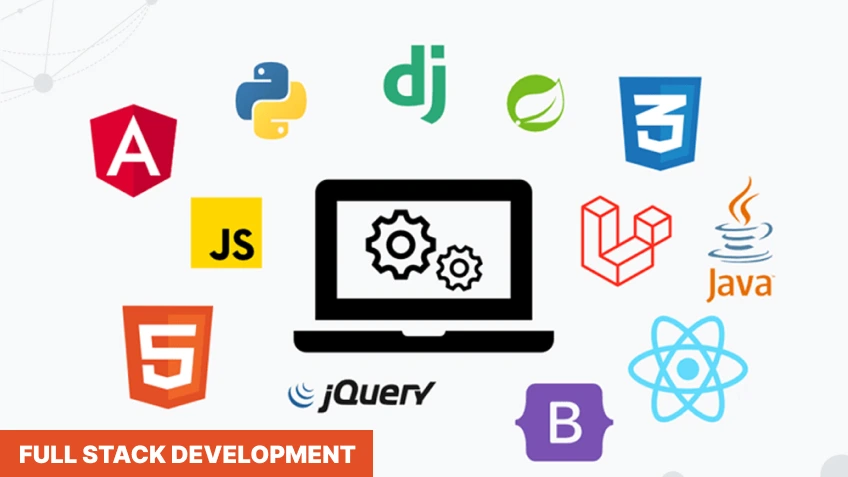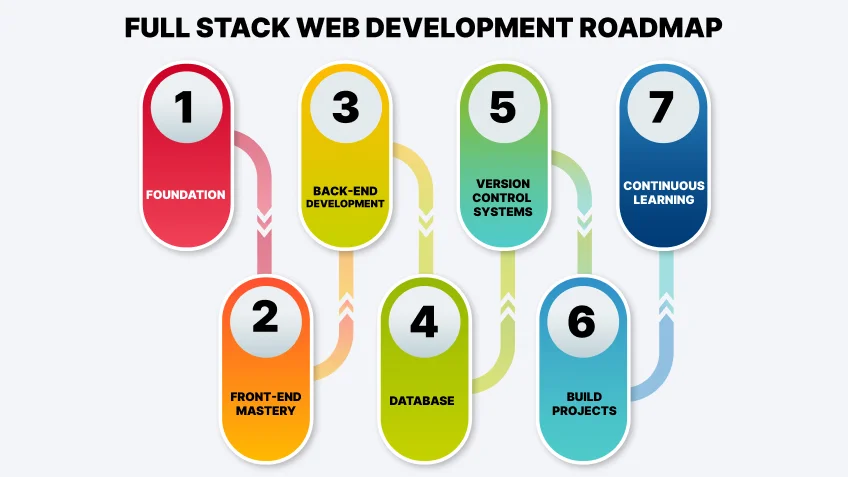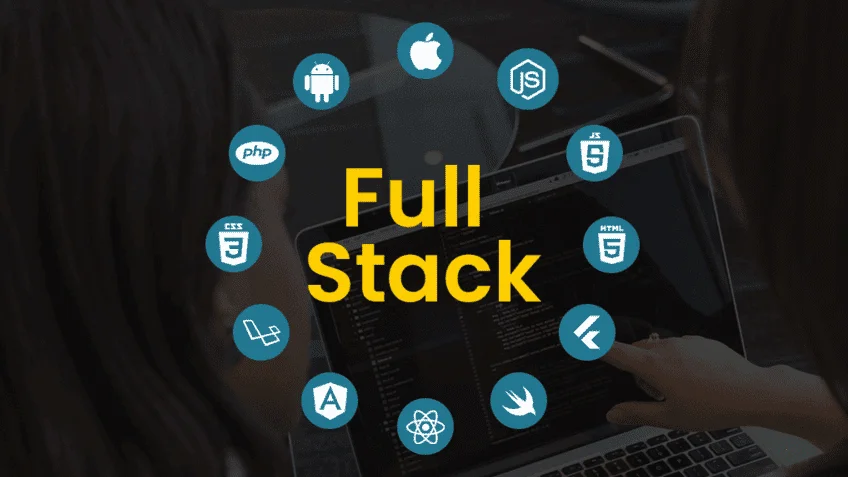By Tanmay Das

Thinking of becoming a full-stack web developer? You’ve made an excellent career choice. Mastering full-stack development skills can greatly boost your earning potential. But where do you start? This 2025 guide serves as your full stack development roadmap, providing a clear path on how to make a career In full-stack web development!
Let’s dive in!
Full-stack developers are the master builders. They are the brains behind the design and functionality of websites and applications that we use or come across daily.
We all increasingly rely on various apps. This dependency has fueled the demand for full-stack developers, making it among the sought-after and well-paid careers.
Today, 78% of hiring managers in Indian companies prioritise candidates with full-stack skills.
However, to build a career in this field, you need an in-depth understanding of how to make a career in web development.
That’s why we are here to help!
The right amount of hard work, immense dedication, consistent focus, and a clear full-stack development roadmap are all you need to carve a career in this field.
Whether you are a complete beginner or a professional seeking upskill, this blog serves as your personal mentor providing an actionable and clear path to becoming a full-stack developer in 2025.
“Websites promote you 24/7: No employee will do that.” – Paul Cookson
A dedicated website is an indispensable tool for businesses to promote offerings, generate leads, and increase revenue. It connects brands directly with potential customers. This core objective has made businesses invest in websites and full-stack developers to build powerful and revenue-generating platforms.
Full stack development includes the development of both the front-end and back-end of web applications.

From designing user interfaces to managing databases and server infrastructure, a full-stack developer is proficient in handling all aspects of the software development life cycle. Simply put, a full-stack developer can build an entire web application from start to end.

Due to their versatility and ability to manage both front-end and back-end development, full-stack developers are highly sought after across industries. From rapid growth to high salary, there are many reasons to become a full-stack developer.
The following pointers highlight why full-stack developers are in high demand.
Full-stack developers possess the ability to handle both front-end and back-end complexities. The adaptability enables full-stack developers to efficiently manage a range of web development challenges.
As a full-stack developer single-handedly manages front-end and back-end complexities, companies can reduce labour costs. Full stack skill eliminates the requirement for hiring numerous specialised roles which saves the company’s cost.
Full-stack developers have a holistic understanding of the entire application architecture. This accelerates the web development cycle. With full-stack skills, developers can switch seamlessly between front-end and back-end tasks which quickens the entire development cycle.
Full-stack developers are proficient in identifying and resolving issues in the entire web development. Their broader knowledge base allows them to diagnose and address problems efficiently, ensuring stability and smooth operations of applications.
With a comprehensive full-stack skill set, developers can take complete ownership of the whole project. This also ensures consistency across all web development components. Additionally, this reduces communication gaps and promotes a unified project vision.
Full-stack developers are in demand across all industries including e-commerce, fintech, healthcare, media, and entertainment. Their skills in handling both front-end and back-end development make them essential for businesses seeking or undergoing digital transformation.
Due to their broader skill set, full-stack developers are highly valuable to employers, making them command top salaries in the job market. The full stack developer salary in India ranges from ₹1,80,000 to ₹15,00,000 per annum depending on the experience, location, company, skills, etc. A full stack developer highest salary in India is ₹48,00,000 per year.

Here is the list of tools and skills you require to become a full-stack developer.
Front-end technologies like CSS, JavaScript, and HTML are foundational languages for web development. React, Angular, and Vue JS are front-end frameworks/libraries that streamline development and offer efficient state management.
CSS preprocessors improve styling whereas responsive design ensures compatibility across devices. Plus, UI/UX principles help in creating intuitive user experiences. Mastering these technologies can also help you become a front-end developer.
Expertise in server-side languages such as Python, Java, Node.js, PHP or Ruby enables developers to build robust back-end logic. Database expertise in NoSQL and relational systems allows for effective data management.
Express.js, Spring, or Django streamlines server-side development alongside the crucial ability to build and consume RESTful or GraphQL APIs and a foundational understanding of server management and cloud platforms.
To manage code efficiently, full-stack developers require Git to track changes and work with others. Tools like pip or npm allow developers to easily install and update software components; and testing knowledge to ensure the code works correctly. A grasp of DevOps basics, including CI/CD pipelines, facilitates efficient deployment and maintenance.
Although strong full-stack abilities are critical for handling complex challenges, effective communication is equally important for seamless collaboration and project success.
Soft skills such as navigating complex issues, adaptability to new technologies, strong communication for conveying technical information, and time management for handling various tasks are crucial.

If you want to start a full stack web developer career, you need a clear path that leads to success. The following full-stack development roadmap is your step-by-step guide to becoming an all-rounder developer.
The initial phase is like learning the alphabet and fundamentals of grammar before beginning with the writing. This is your fundamental toolkit.
In the first phase, you will learn the basics of programming like the core languages that make up the web such as CSS, HTML, and JavaScript, and how computers understand instructions.
Front-end development is like designing the interiors of a house and arranging things to make it look appealing. It involves focussing on building the appearance or face of a website or app.
This phase includes building user interfaces that offer ease of use and a visually stunning experience. In this step, you will dive deeper into JavaScript and master frameworks like React, Angular, or Vue JS to efficiently build complex user interfaces.
Back-end development is like building an electrical and plumbing system of a house to ensure everything works smoothly under the walls. In the third phase, you will learn to create a powerful engine that backs a website or an app.
Back-end development involves handling data, server-side logic, and user authentication. In this step, you learn frameworks like Express.js and server-side languages like Node.js, Java, or Python.
This step is like building a filing system to keep all vital documents organised. In this phase, you will learn to store and handle data. The database includes learning systems like MySQL or MongoDB and methods to write queries to retrieve and manipulate data.
The version control system is like using the track changes feature in a document but for code. Think of it this way: developers working on a project need a way to keep track of who changed what, like a shared, detailed history; Git helps with that.
This is crucial for collaboration and managing different versions of your project.
Applying practical knowledge in the real world is a very important step in full stack development roadmap. This phase involves solidifying your theoretical knowledge by building projects ranging from simple to complex. Hands-on experience is crucial to build a robust portfolio and acquire real-world problem-solving skills.
It is no surprise that the technological landscape is evolving at a rapid pace. To build a successful full-stack web development career, you need to stay updated with emerging frameworks, languages, and best practices.
You can engage and contribute to the full-stack development community, refine your skills to stay competitive, and adapt rapidly.

To become a full-stack developer, you need a blend of theoretical and practical experience. Here is a list of things you need to start a full stack developer career in 2025.
Although having a computer science or related field degree is good for building solid fundamental concepts, data structures, and algorithms; it is not strictly necessary. Here, enroling in a comprehensive full-stack development course can accelerate your learning process.
While theoretical knowledge is vital to learn full stack web development, it is very essential to apply it to real-world projects. Building practical projects not only helps you gain hands-on experience but also builds a robust portfolio that demonstrates your skills to potential employers.
Mastering core programming languages like Python, JavaScript, or Java is essential for full stack web development. Developing full stack expertise demands a thorough understanding of programming language basics and practical application in front-end and back-end environments.
Gaining expertise in popular tools and frameworks such as MongoDB, Express.js, React, Angular, and Node.js streamlines development. You can acquire this expertise through MEAN and MERN full-stack web development. Proficiency in version control systems like Git also boosts productivity and accelerates the development process.
Acquiring industry-recognised certifications in full stack web development can greatly boost your job prospects. Our E&ICT- IIT Guwahati certified full stack web development course in Kolkata not only demonstrates your skills but also positions you as a proficient full stack web developer in this competitive job market.
Networking is all about building strong relationships with other professionals in the tech industry. You can do this through engaging in full stack online communities and attending events. Networking not only helps in collaboration but also enhances job opportunities. This significantly pushes your full stack web developer career forward.
In this guide, we hope you understand how to make a career in web development in 2025.
In essence, the path to becoming a successful full stack developer is building practical skills, learning essential programming languages, frameworks, and continuous learning.
By mastering essential tools and technologies, building a strong portfolio, and walking hand-in-hand with the ever-evolving tech landscape, you become an all-rounder developer.
Our advanced full-stack development course helps you confidently step into the dynamic world of full-stack development. Our industry expert-led program emphasises developing practical skills through real-world applications.
Get in touch with us today and let’s talk about how our E&ICT- IIT Guwahati certified full stack developer course in Kolkata can transform you into a proficient full stack web developer in 6 months.
Which full stack course is best for getting IT jobs?
Full stack courses with project-based learning and 100% placement assistance, industry-relevant frameworks like MEAN & MERN, Laravel & Vue JS, and MS ASP.Net Core & Angular are best for getting IT jobs.
Is PHP worth learning?
Yes, PHP is worth learning for full-stack development. It helps build dynamic websites and maintain legacy systems. It is also valuable when using frameworks like Laravel.
How much time it takes to master full-stack web development?
Mastering full-stack web development can take a few weeks to several months depending on your grasping power, the institute you are taking full-stack training from, practical projects, etc.
What are the best resources to learn full-stack web development?
Karmick Institute provides practical-focussed comprehensive full-stack development courses with industry-relevant stacks like MEAN, MERN, Laravel, Vue JS, MS ASP.Net Core, and Angular.
How much front-end is required to become a successful full-stack developer?
Proficiency in HTML, CSS, and JavaScript is essential for full-stack web development. Furthermore, an understanding of front-end frameworks like Angular or React is beneficial.
Do I need to learn all programming languages for full-stack development?
No, just focus on mastering one programming language at a time. You can start with key languages like JavaScript for both front-end and back-end via Node.js. Having knowledge of fundamental concepts is more important than learning every language.
Is a degree necessary to become a full-stack developer?
No, the degree isn’t strictly necessary to become a full-stack developer. Practical skills, demonstrable experience, and a strong portfolio are more crucial.
What skills do I need to become a full-stack developer?
Becoming a proficient full-stack developer requires expertise in front-end (HTML, CSS, JavaScript, React/Angular), back-end (Node.js, Python, Java), databases (SQL/NoSQL), Git, APIs, and deployment.
How can I gain practical experience in full-stack development?
You can work on practical projects, contribute to open source, and start an entry-level position. Our full-stack development course lets you work on real-world projects to solidify your knowledge in the field. We ensure that you gain practical experience during the course to build a strong portfolio that impresses your potential employers.
Can full-stack developers work remotely?
Yes, due to the nature of full stack development job which involves coding and online collaboration, full stack developers can work remotely.